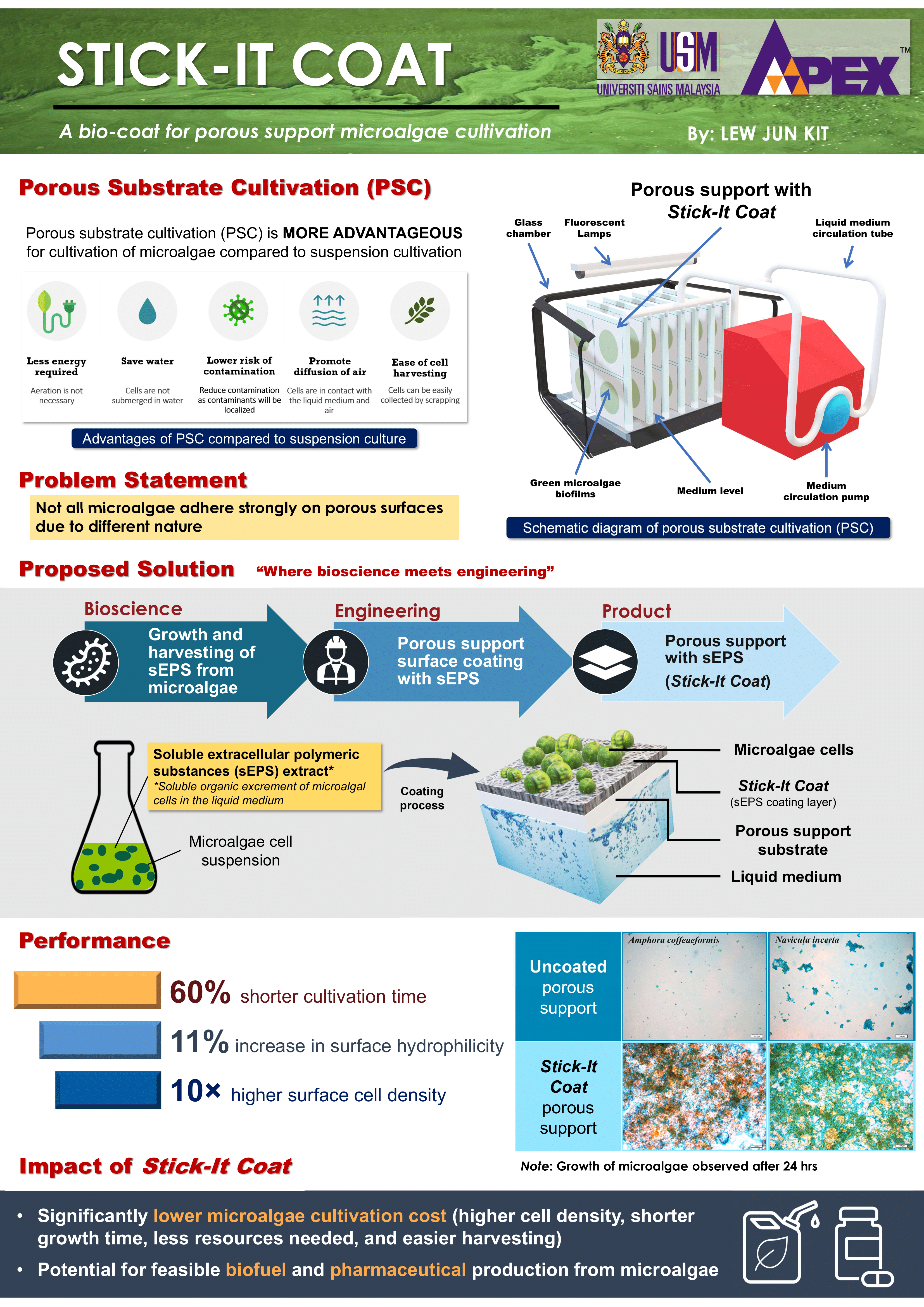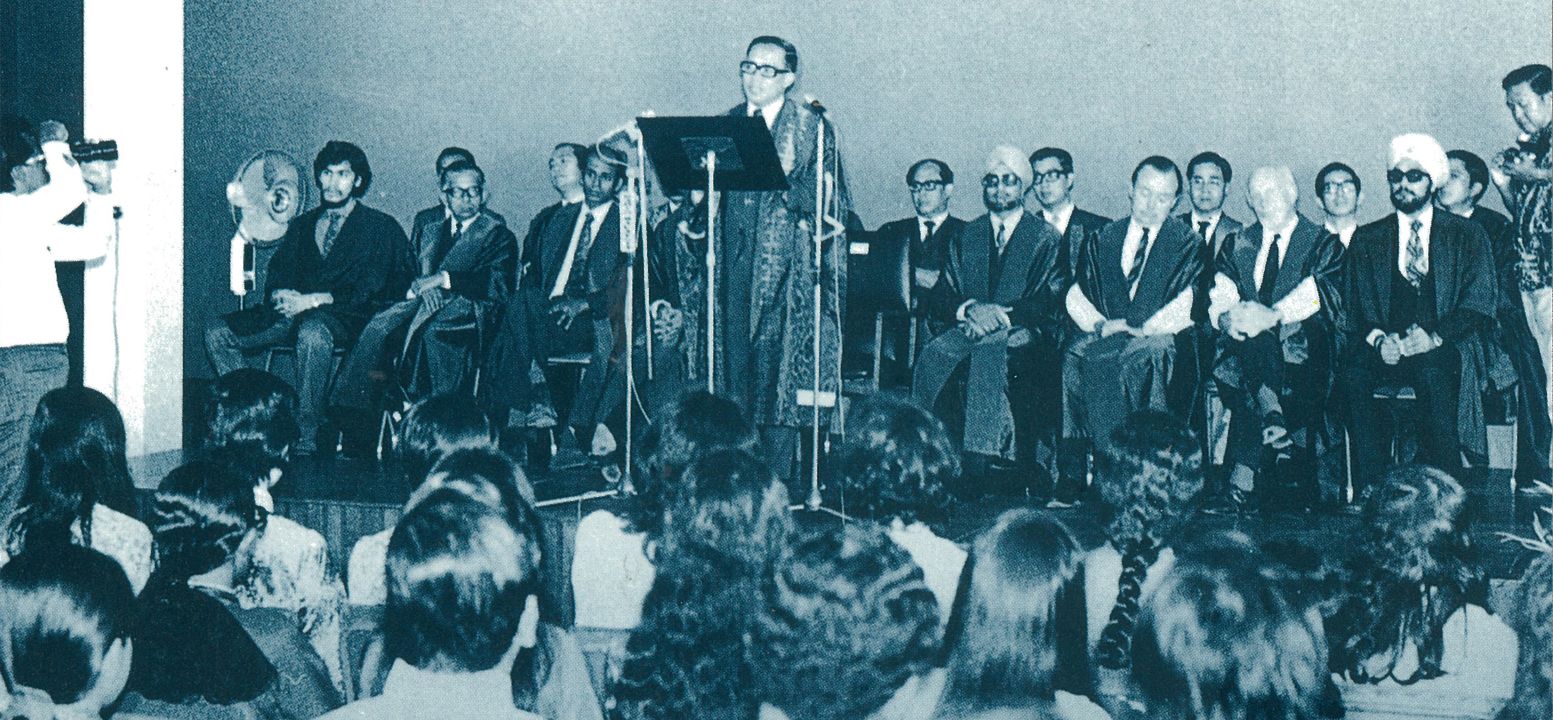STICK-IT COAT
Stick-it Coat
The initial idea of coating a surface for microalgae to grow on was inspired by the formation of biofilm, which is observed in nature when microalgae are growing on surfaces, i.e., rocks, walls of concrete drain etc. It was discovered that the biofilm helps to aggregate and stabilise the microalgal cells, in addition, the biofilm acts as a nutrient source for the cells in case of nutrient scarcity.
As porous substrate cultivation (PSC) of microalgae gained traction in the recent decade due to its advantages over suspension cultivation, hence, the idea of pre-coating a surface to promote microalgae growth emerged. The coating was obtained from Navicula incerta, a microalga that was cultivated for its soluble extracellular polymeric substances (sEPS) and was extracted from the supernatant via centrifugation.
The sEPS, or “Stick-It Coat”, was coated onto polyvinylidene fluoride (PVDF) membrane surface and the presence of Stick-It Coat was confirmed by alcian blue staining (blue stains were observed on the coated membrane) and a change in the water contact
angle measurement was recorded (74.1° for coated membrane and 83.1° for uncoated).
The PVDF membrane strips with and without Stick-It Coat were placed in a submerged PSC and allow the microalgae to grow. At the end of the experiment, it was found that the coated membranes had, on average, (1) up to 10 times more cells attached on the membrane surface, (2) 11% increase in surface hydrophilicity, and (3) 60% shorter cultivation time than the uncoated ones.
These results implied cost reduction for microalgae cultivation, which is particularly beneficial to the biodiesel and pharmaceutical industries. Savings in cost and resources promote sustainable consumption practices to produce value-added products.

About Us
Universiti Sains Malaysia is a pioneering transdisciplinary research intensive university that empowers future talents and enables the bottom billion to transform their socio-economic well-being.
Additional Information

